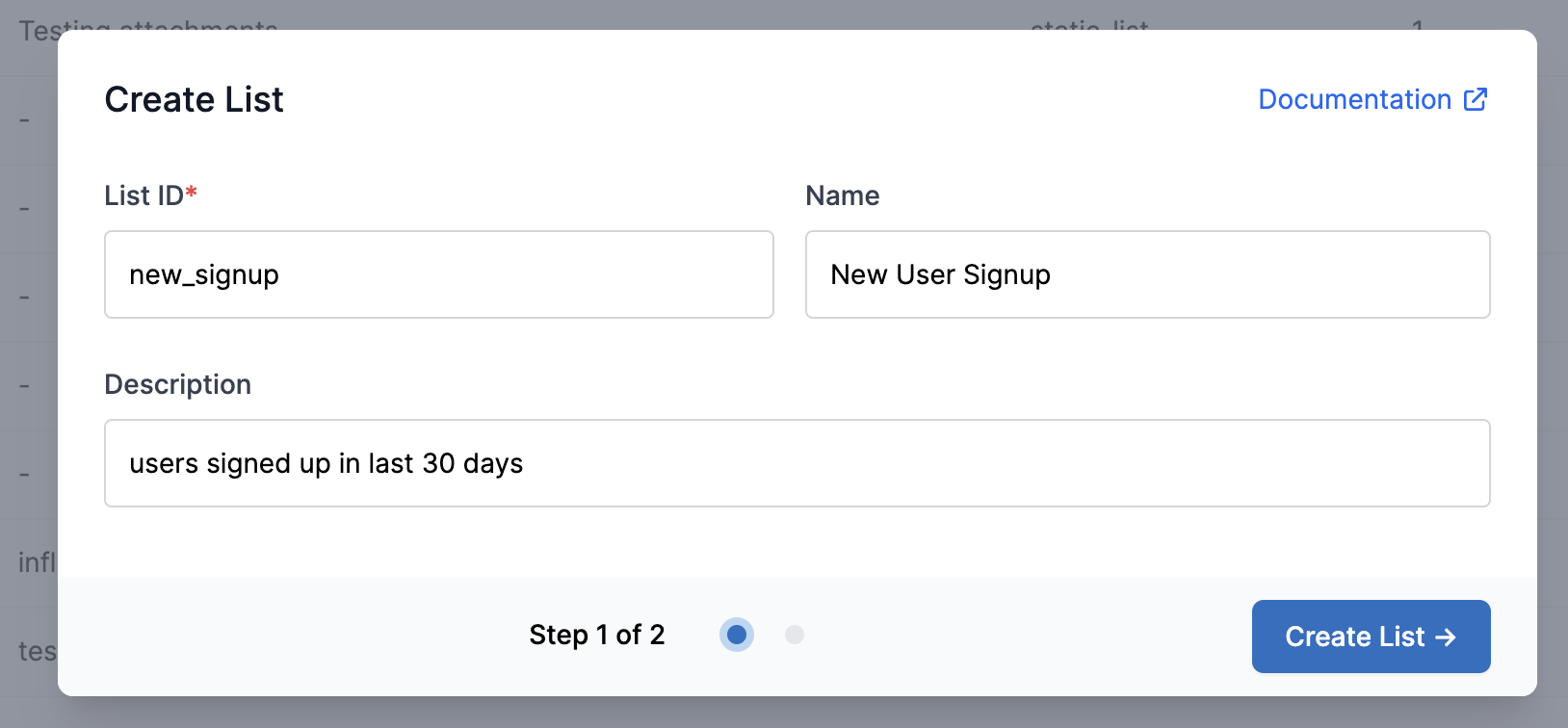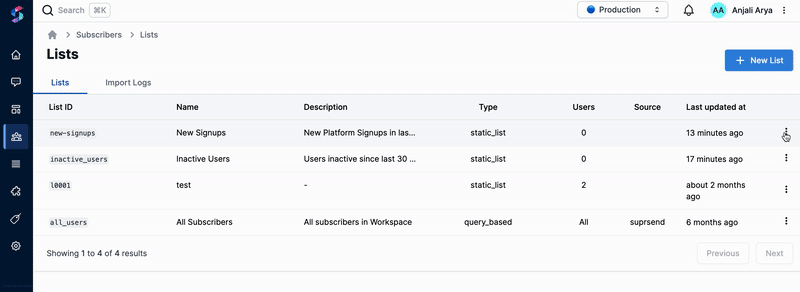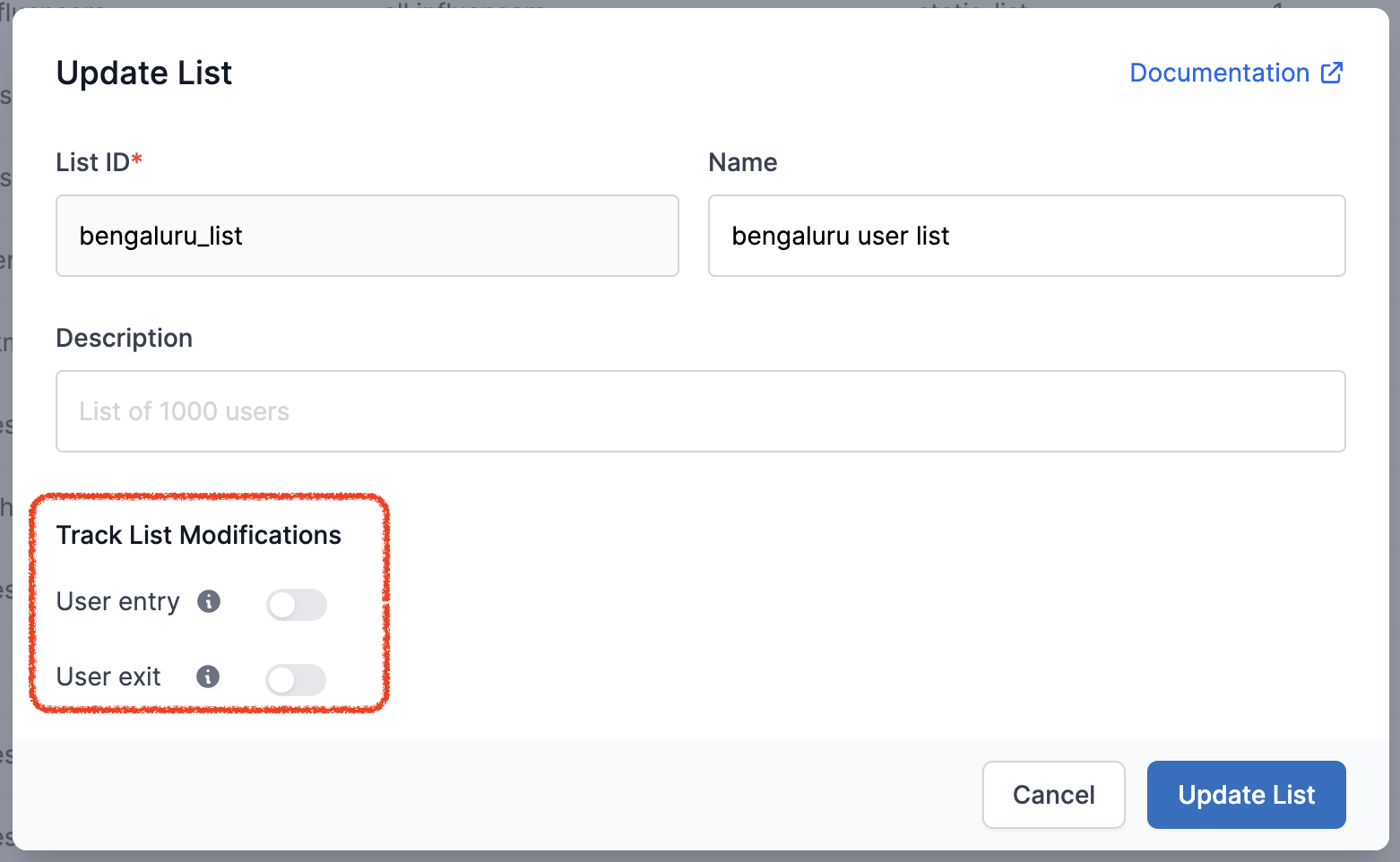all_users, which automatically includes all users available in your workspace. You can use this list to send campaigns like newsletters and product updates.
Creating lists
You can create lists using one of the following methods:Programmatically using SDK / API
Programmatically using SDK / API
This is the most flexible way of updating users in a list. This way, you can keep the list updated in real-time. You can use API or update it using backend SDK
Using third party data platforms
Using third party data platforms
SuprSend supports integration with third-party platforms to sync user and event data. You can also sync user cohorts from these platforms into lists and run campaigns on those user segments from SuprSend. We currently have integration support for below connectors:Need support for another connector? Please Let us know
Mixpanel
From UI via CSV upload
From UI via CSV upload
You can also update List directly from the SuprSend dashboard. This way, marketing or product teams can send broadcasts directly from the dashboard without any tech involvement. Recommended for cases when you want to send a one-off campaign and only need the list temporarily.You’ll find the option to create the list and update users on the List Tab.
1
Create List
-
To create a list, click on the
+ New Listbutton and add the relevant information.List IDis the unique identifier for the list.NameandDescriptionare just for reference so that you know what this list represents.
Name and Description later by clicking on Modify List option available in the right side Kebab menu on a list.2
Update Users in the list
-
Click on the
Update Usersoption available in the right side Kebab menu on a list. It will open a dialog like the one shown below
1
Choose the Update Function
- Choose
Addto add more users to an existing list of users. e.g., if you are adding today’s sign ups in the new sign ups list every day - Opt for
Replaceto replace the current list with a completely new set of users. This is handy in situations where you need to update the list with all users who fit a criteria (like users subscribed to a topic), without needing to track individual additions.
2
Upload CSV
Upload a CSV file containing the distinct_id of the users. Make sure that the column is labeled as  Click on
Click on
distinct_id Click on
Click on Update Users button. You can check the update progress in Import logs.Automate list sync using database connector
Automate list sync using database connector
You can automate your list update using data directly by writing SQL query on your database. This allows your data, product and growth teams to completely own product and engagement notifications without any development effort.You can also use it to sync user profiles and send personalized broadcasts to users using their profile properties. See how to setup database sync here.

Configure list events
You can configure events when a user enters or exits a list. e.g. - you have a list of users “Active on the platform in last 7 days”. Whenever a user exists this list, you might want to send a notification to re-engage the users. You can do so using list events. There are 2 types of list events that you can configure- User Entry- This will trigger a bulk event
$USER_ENTERED_LIST - <list_id>for all new users added to the list whenever a list is updated. - User Exit- This will trigger a bulk event
$USER_EXITED_LIST - <list_id>for all new users removed from the list whenever a list is updated.
Existing users won’t trigger workflowsWhen you create a workflow that listens to
$USER_ENTERED_LIST, it only triggers for users added to the list after the workflow becomes active. Users already in the list won’t trigger it.Need to notify existing users? Use Broadcast to send to everyone in the list.Modify List option on SuprSend dashboard -> List page or using the list API. Event tracking is set as false by default.

Sending notification to list users
- You can either setup individual workflows for list users based on list events. e.g., if you want to notify job seekers who were active on the platform in the last 7 days but left today.
- The most recommended way to send notification to list users is via Broadcast. You can schedule broadcast on this list from the dashboard by clicking on “Run Broadcast” option or trigger it programmatically via API.We recommend sending broadcasts using promotional category so you don’t end up overloading transactional and system queues. Learn more about how to choose the right notification category here.
